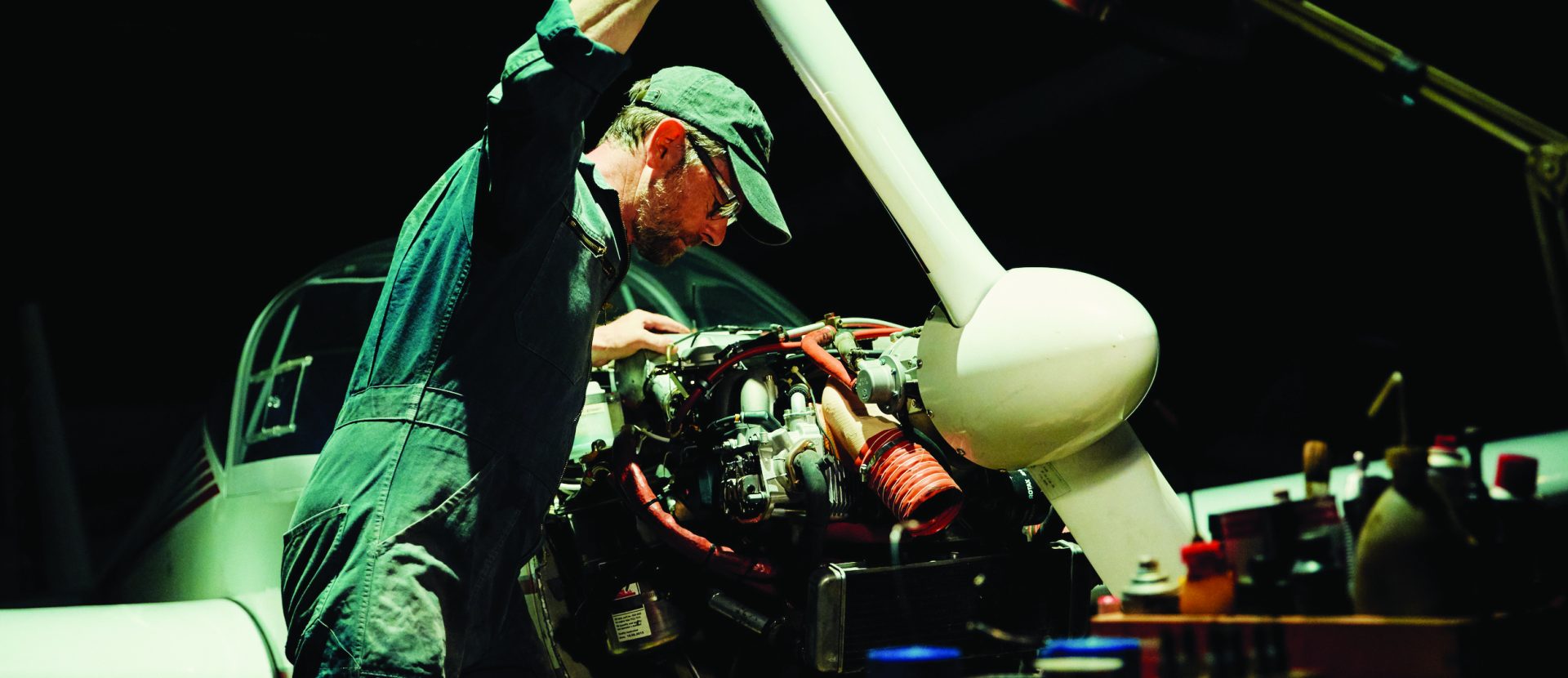There comes a time in the life of every piston engine when it must be overhauled or replaced. There is no exception to this rule, however there are many factors that affect the wear of a piston engine. Utilisation per month, efficiency of the air filter, type of engine oil used, frequency of oil and oil filter changes, techniques used by the pilot in engine management (particularly at startup & shut down), operational environment, regularity of maintenance and the storage condition of the aircraft are all relevant factors in the health of your engine.
WHAT IS ‘ON-CONDITION’?
The majority of aircraft mechanical components do not fail abruptly, but give some warning or sign of the fact that they are about to fail. These are called “Potential Failures” and are defined as identifiable physical conditions which indicate that a functional failure is about to occur or is in the process of occurring. The amount of warning given by different potential failures varies from microseconds to decades. Longer warning intervals mean greater maintenance task intervals.
Maintenance tasks (inspections/checks) that are used to detect potential failures, and consequently to avoid a total functional failure, are called “On-Condition” maintenance tasks. This is because items are left in service on the condition that they continue to meet a desired physical condition and performance standard.
The process of “On-Condition” maintenance is applied to items (e.g. an aircraft engine and a wooden aircraft propeller) on which a determination of their continued airworthiness can be made by visual inspection, measurements, tests or other means without disassembly inspection or overhaul. The condition of an item is monitored either continuously or at specified periods. The item’s performance is compared to an appropriate standard or well documented life experience to determine if it can continue in service. These appropriate standards may relate to, but are not limited to, cleanliness, cracks, deformation, corrosion, wear, pressure or temperature limits, looseness or even missing fasteners, and will be published in the applicable approved data for the aircraft or the aircraft component.
Although RAAus recommends that the engine manufacturers’ overhaul schedules be followed, “On-Condition” operation may be an option, unless the manufacturer specifically excludes it (for example Jabiru).
When reviewing the Rotax 912 maintenance manual, it does not specifically exclude “On-Condition”, however it does state a TBO. The RAAus Technical Team initiated a MARAP approval to permit certain four-stroke Rotax engines fitted to type-certified/accepted aircraft to operate “On-Condition” past TBO on successful application. A point to note for aircraft owners operating Rotax engines is that the manufacturer states that engine hours are recorded from engine start to engine stop and not on a flight switch.
“On-Condition” operation is not available for Light Sport Aircraft (LSA) however it may be possible to apply to CASA or an Authorised Person for an Experimental Certificate of Airworthiness, which may permit “On-Condition” operation.
REQUIREMENTS FOR ON-CONDITION – TYPE CERTIFIED/ACCEPTED AIRCRAFT
- The engine must have been maintained in accordance with the manufacturer’s schedules from the day of installation. No missed or late service intervals. All Service Bulletins carried out as and when they fell due.
- TECH FORM 023 – ENGINE CONDITION REPORT completed at time engine commences running On-Condition and affixed into the aircraft logbook.
If the above was not completed, running the engine past TBO is not available without a MARAP approval. Please see members.raa.asn.au/aircraft/marap/ for information on applying for the Rotax engine TBO limit extension.








